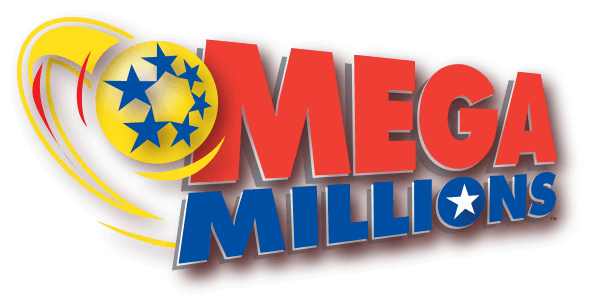
They don’t buy lottery tickets. Not habitually, anyway.
But the jackpot chasers typically emerge when they see the Mega Millions prize tick up and up and up, and they figure, “Hell, why not?”
That’s by design.
And if you have noticed a run of eye-popping jackpots from Mega Millions and the similarly designed Powerball recently, that’s by design, too.
There were no winners in Tuesday’s Mega Millions drawing for a $667 million jackpot.
So the prize rolled over, ballooning to an estimated $900 million. If somebody wins the Mega Millions on Friday, it will be the second-largest jackpot in U.S. lottery history, behind the 2016 Powerball jackpot that was worth $1.6 billion, split across three winning tickets.
And the current Powerball jackpot continues to grow, too: Nobody won Wednesday’s drawing, so on Saturday, the jackpot will be worth an estimated $430 million.
Mega Millions has existed in some form since 1996. But only recently has the game been shelling out massive jackpots. The lottery officials who run Mega Millions tweaked the rules and odds of the game last October to make jackpots pay out less frequently, spurring their monster growth. Since that change, three of the six largest Mega Millions jackpots have been paid out.
And then there’s Friday’s monster Mega Millions drawing, the largest in the game’s history.
“Ultimately, these games, they’re all about the jackpots,” Gordon Medenica, Maryland’s lottery and gaming director, said Wednesday.
Officials were worried that the relatively smaller but more frequent prizes – a “paltry” $100 million, for instance – would result in “jackpot fatigue,” which is why they tweaked the game last year, Medenica said. Now, the Mega Millions jackpots grow and grow, creating huge prizes with infrequent payouts. The other significant change that helped fuel the jackpot growth was the increase in the Mega Millions ticket price, which doubled to $2.
The last time somebody hit the Mega Millions was July 24, when an office pool in Silicon Valley won the $543 million jackpot. The jackpot reset at $40 million for the next drawing and has been soaring ever since.
The game – played in 44 states, plus the District of Columbia and the U.S. Virgin Islands – becomes a “cultural phenomenon” somewhere in the $200 million to $400 million range, said Medenica, who holds the informal and rotating director position for an 11-state Mega Millions consortium. When the jackpots flirt with the half-billion-dollar mark, state lotteries don’t even feel the need to advertise, he said.
Here’s how Mega Millions used to work: Players picked five numbers from 1 to 75 and a Mega number from 1 to 15. The odds of winning the top prize were 1 in 258,890,850.
Since Mega Millions modified the formula, players now pick five numbers from 1 to 70 and a Mega number of 1 to 25. The odds of winning the jackpot are now 1 in 302,575,350.
Reducing the number of balls for the first five numbers increases the chances of winning a smaller prize. But raising the number of Mega Balls makes it harder to win the jackpot. (You still win the big jackpot by matching all six winning numbers in a drawing.)
Powerball made similar changes to its rules in 2015.
Lottery officials have said that the change was in response to demand from players that they wanted to start with a big jackpot and have a better shot at smaller prizes, such as getting your $2 back all the way up to a $1 million payout for matching all five numbers.
State lottery commissions have relied on human psychology and the spirit of optimism to fuel sales. They discovered that when the jackpot grows to an absurdly high figure, even skeptical players will buy tickets – perhaps on a whim at a convenience store or by chipping in a few bucks in an office pool, Medenica said.
He calls these gamblers “infrequent players,” and their participation helps boost jackpots to historic levels, he said. Colorado Lottery spokeswoman Kelly Tabor referred to them as “jackpot chasers,” as the Powerball jackpot swelled to the second largest in lottery history.
That is, until Friday’s Mega Millions drawing, which may produce one or more instant mega millionaires.
Mega Millions is in “uncharted territory,” Medenica said, and the lotteries’ financial models cannot predict what will happen. The estimated jackpot may be revised to account for higher ticket sales if officials see an uptick in activity before the next drawing, he said. On Wednesday, the jackpot was bumped from $868 million to $900 million.
U.S. lottery sales totaled $77.7 billion in fiscal 2018, up about $5 billion from the previous year, according to La Fleur’s Magazine, a publication focused on the lottery industry. Sales were still down, compared with 2016, when they surpassed $80 billion, according to the North American Association of State and Provincial Lotteries. In that year, lottery ticket sales eclipsed the combined total of what Americans spent on movies, video games, books, music and sports tickets.
Lottery sales, defended by state commissions as a way to help fund education and veterans programs, have drawn fire in recent years. For instance, a KPCC/LAist investigation in California “found contributions to education by the lottery are essentially unchanged from 12 years ago, even though revenues are up by billions.”
(c) 2018, The Washington Post · Alex Horton
{Matzav.com}











